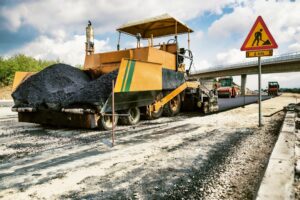Infrastructure has been a constant theme of the Biden administration. That isn’t surprising, considering the state of our roads and bridges, not to mention recovering from the pandemic. In most of the big-ticket proposals, Congress has shown a willingness to combat the decadeslong effect that highway construction has had on communities of color.
And there’s good reason for such provisions. Over the years, our highways have been molded by both personal and institutional racism. The Federal Aid Highway Act of 1956 is responsible for the construction of our interstate system. While most of that planning involves highways between major cities, plenty of it created paths through metropolitan areas and neighborhoods. Therein lies the problem.
Keeping costs low was key in building our interstates – that meant finding the cheapest real estate in town. More often than not, that’s where Black communities built themselves up. Redlining all but guaranteed that Black and Brown citizens would be pooled together in underdeveloped areas. Developers, fueled by private, corporate, mostly white investment, bought up all the land they could in majority-minority neighborhoods. Local governments even aided their quest by granting extra-wide rights of way.
The effect was devastating. Highways destroyed historically Black neighborhoods across the country. A highway decimated Durham’s Hayti neighborhood, dubbed the “Black Wall Street of the South.” Interstates similarly sliced up sections of New Orleans, Baltimore, Detroit, and Richmond, laying waste to Black businesses and communities in their wake. While tragic, these are key examples of institutional racism’s vicious and inescapable cycle. Throughout our history, however, Black neighborhoods have fallen victim to acute, personal racism.

Kevin Kruse, a Princeton professor, claims that highway construction in Atlanta was abjectly fueled by the desire of local officials to segregate their city in the late 1950s. Then-Mayor Bill Hartsfield notably called for a “boundary between the white and Negro communities on the west side of town,” and highway construction fit the bill. Across the country in Minnesota, builders presented the state with two plans to build I-94. The first proposed route was along an abandoned railroad and the second was through the Rondo neighborhood, inhabited by Black residents in their exodus from tenement housing in downtown St. Paul.
Minnesota chose the path through the Black neighborhood, displacing 750 families and 120 businesses.
Our history is dotted with dozens of examples of this sort of racism, whether abject or institutional. From the work of Robert Moses in New York to the construction of I-70 in Indianapolis, lawmakers have clearly used highways to disrupt Black economies, culture, and excellence. Now, the federal government seeks to rectify these past injustices through monumental legislation – efforts held up by moderate Democrats.
To block antiracist legislation is to be complicit in racism. Party identification, grassroots credentials, and political relationships all fall to the wayside when it comes time to support an agenda. The segment of Congress we’re talking about has, in the last year, blocked voting rights legislation, major police reform, and the abolition of the filibuster. These are all changes sold to social justice groups throughout the 2020 campaign cycle. It’s high time our leaders follow through.
We must hold legislators accountable for their promises. Bottom-up pressure is the best way to ensure that we accomplish genuine reform and hold policymakers to their campaign promises. Part of that is educating our elected officials about the finer points in our history, like the racism of highway construction. By letting them know the experiences of Black communities like Hayti and Rondo, we can ensure the same thing doesn’t happen to our neighborhoods today.
